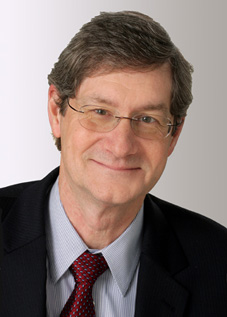| |
| |
| |
| |
| |
| |
| |
| |
Messages from the
|
||||||||||
Stephen Patoray When the 2014 WMD topic was first proposed, I began to think about what the global energy challenge is, and the role that measurements and especially legal metrology play in it. While measurements are central to most basic decisions on energy usage, there are many other aspects of the global energy challenge which are much more complex:
These factors may result in significant increases in demand for all types of energy which in turn may result in environmental changes and pollution. This demand requires redistributing existing energy supplies, increasing energy production and developing alternative energies. It became clear to me that I needed to break this down into smaller, more manageable pieces of information so I could better understand the role of legal metrology. I began to realize that no matter how complex this challenge seems to be, it comes down to individual choices regarding the energy we use in our daily lives. It makes no difference whether we are talking about national or local governments, large or small companies, organizations or individuals. However, to make good choices we need information, much of which is based on measurements. For the results of these measurements to be useful we must have confidence in the instruments and the processes used. To ensure this confidence, the instruments must comply with performance requirements laid down in internationally recognized written standards. Many instruments under legal metrological control are linked to our consumption of energy:
The vital role that measurements and especially legal metrology play in this global challenge is now very clear to me. As we join together to celebrate World Metrology Day, we should all be aware and be thankful that there are knowledgeable, highly skilled and dedicated people, not just in the legal metrology community but across the many businesses in the energy sectors, who are working every day to ensure that we have the systems in place to provide accurate, internationally accepted equipment and measurements. Thanks to these people we are all able to have confidence in the decisions we make with respect to all the measurements we need in order to address the global energy challenge.
|
|
Martin Milton The availability of energy from many different sources is vital for our lives today. The well-being of industry, commerce and the maintenance of our quality of life depend on safe, secure, sustainable and affordable energy. The challenge of meeting the ever-increasing demand for energy, whilst controlling costs and minimizing damage to the Earth, is leading to the development of new sources of energy and greater efficiency in its use. This progress is only possible because providers and users of energy can have access to a globally recognized basis for the measurement of energy in its many different forms. For example, measurements provide the basis for:
All of these are possible because there is access around the world to a measurement system originating from the Metre Convention, and now based on the International System of Units (SI). The measurement of energy has always been one of the central challenges that has shaped our system of base and derived units. The need to measure temperature, electricity and light is motivated by the need to quantify sources of energy and has led to the development of the kelvin, the ampere and the candela, all of which are base units in the SI. The first methods for measuring temperature, electricity and light were developed in the nineteenth century to meet the needs of an industrial revolution powered by coal and gas. Nowadays the challenge of measuring new forms of energy continues to inspire research in metrology. For example, national metrology institutes around the world are working to develop new methods:
This research involves collaboration between institutes in different countries and the results feed in to and strengthen the existing infrastructure for the international recognition of measurements. In this way the metrology community contributes to the world-wide efforts to meet the global energy challenge.
|
||||||||
|





